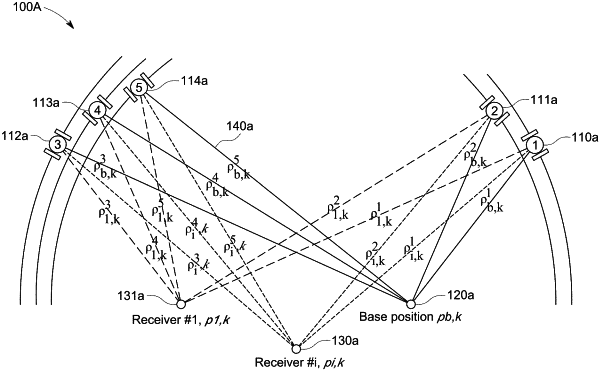| CPC G01S 19/51 (2013.01) [G01S 19/393 (2019.08); G01S 19/396 (2019.08)] | 18 Claims |

|
1. A distributed estimation system (DES) for jointly estimating states of a plurality of GNSS receivers moving in a region using measurements of a Global Navigation Satellite System (GNSS), wherein each of the moving GNSS receivers is equipped with a GNSS transceiver configured to receive GNSS measurements and transmit GNSS data including one or a combination of the GNSS measurements and derivative of the GNSS measurements, the DES comprising: at least one processor; and the memory having instructions stored thereon that, when executed by the at least one processor, cause the DES to:
collect the GNSS data transmitted by the plurality of GNSS receivers over a wireless communication channel;
cluster the plurality of GNSS receivers into a set of different clusters subject to a constraint indicative of an upper bound on several GNSS receivers in each cluster defining computational complexity of jointly estimating the states of the GNSS receivers assigned to each cluster;
execute a set of probabilistic filters corresponding to the set of clusters to estimate the states of GNSS receivers in one cluster independently from estimating states of the GNSS receivers in other clusters, wherein a probabilistic filter estimates the states of the GNSS receivers in a corresponding cluster by fusing the GNSS data collected from the GNSS receivers in the cluster to jointly reduce an estimation error of each of the GNSS receivers in the cluster;
update the clusters of the plurality of GNSS receivers based on a measure of estimation error in the states of different GNSS receivers in different clusters subject to a computational constraint; and
transmit the tracked states to the corresponding GNSS receivers.
|